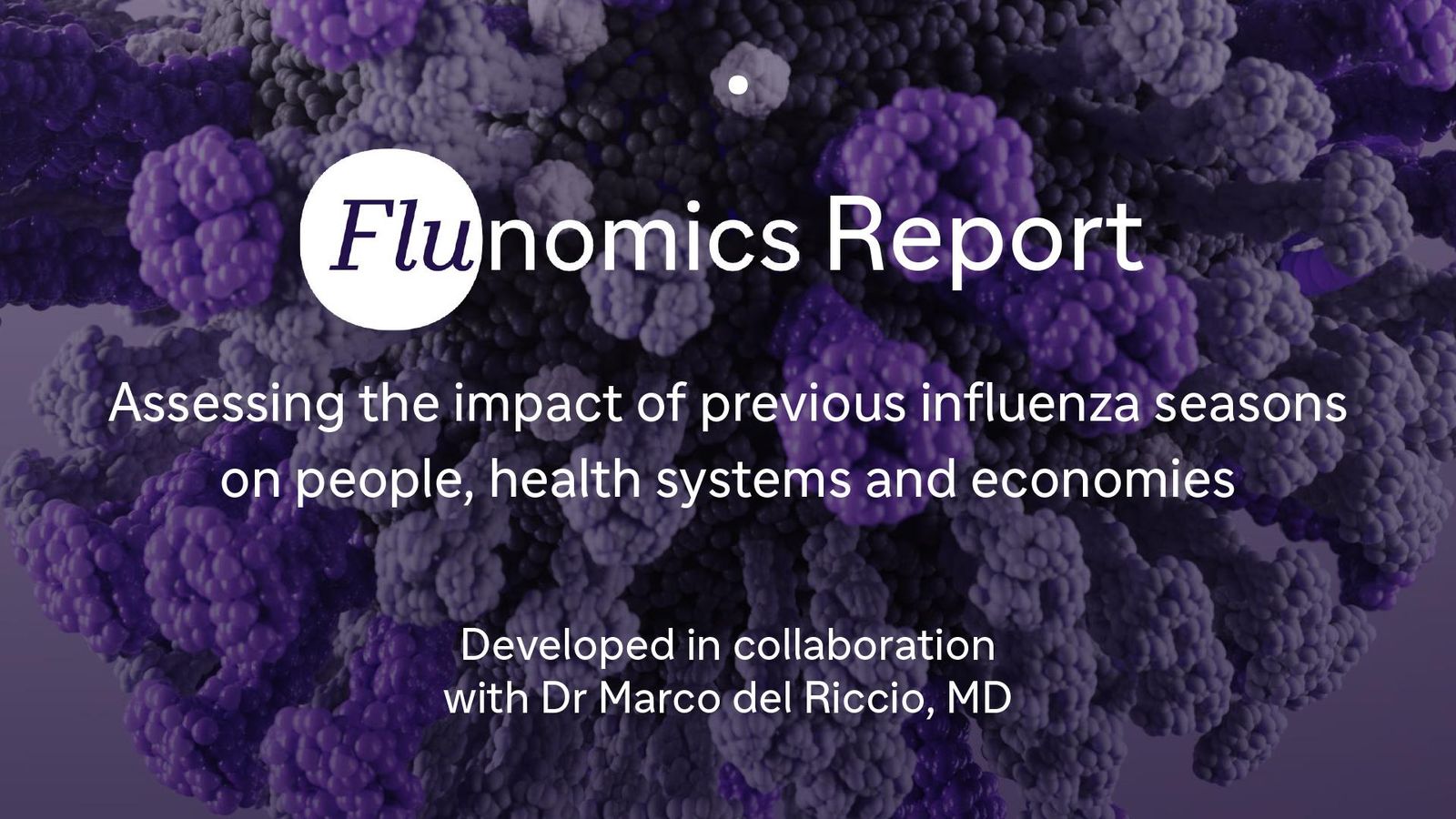The best way to help protect from the virus is an annual flu vaccination.1 It has been shown to help lower the risk of catching the flu as well as help reduce the severity of illness for those who still experience symptoms of the flu.1
At Sanofi, we believe we must spread awareness of the severity of the flu to increase vaccination and help reduce its potential impacts.

Spotlight on…Assessing the Impact of Previous Influenza Seasons – Flunomics
Seasonal influenza remains a persistent yet underestimated threat to public health. The 2024/2025 influenza season was notably severe in the U.S.2 In this report, Sanofi leverages real-world data from seven countries, including the U.S., to highlight not only the continuing burden of influenza but also the systemic challenges — such as fragmented data collection and inconsistent surveillance protocols — that hinder effective public health responses. As we recalibrate how we can better address preventable public health threats like influenza, this report underscores where we are making progress and why greater investment, innovation, and coordination are urgently needed.
Some People Are More at Risk
While anyone can get the flu, certain groups are at increased risk of flu-related infection and complications. High-risk individuals include anyone who has a chronic health condition (even if these conditions are under control), young children, pregnant women, older adults, and certain racial and ethnic minority groups.3
Older Adults
Older adults, especially those 65+, represent the majority of flu-related hospitalizations and account for 6x the number of deaths from flu-related complications compared to every other age group combined.4
Respiratory Conditions
The flu can worsen symptoms for people living with respiratory problems, such as COPD, asthma, or cystic fibrosis, and may lead to pneumonia.5
Heart Disease
The flu can be especially dangerous for those living with cardiovascular diseases. A 10-year study of 1,227 adults aged 40+ found that a first heart attack is about 10x more likely following a flu infection. It also examined 762 adults aged 40+ and showed an ~8x increase in the likelihood of first stroke following a flu infection.6
Study limitations:
*Individual non-influenza respiratory virus impact and age impact on vascular events were not investigated. During the study period there were changes in microbiological testing practices (e.g., PCR was not widely used in 2004). The day after the date of respiratory sampling was used as the start of the risk period.
Diabetes
Even when well-managed, people with diabetes (type 1, type 2, or gestational) are at an increased risk of serious flu-related complications. A study of 162 hospitalized flu patients aged <1 to 85 years showed that adults living with diabetes may be at a ~3x higher risk of hospitalization and a 4x higher risk of ICU admission.7
Study limitations:
This study was limited to those with PCR-confirmed influenza A H1N1. Medical history was obtained solely by patient interview.7
Disparities
Certain racial and ethnic minority groups – including Black, Latinx, and Indigenous Americans – are less likely to get flu vaccines and more likely to be hospitalized for flu-related complications.3
Our Continued Commitment
At Sanofi, we've been working to help protect the public from the flu and its complications for over 70 years. We've continually integrated advanced technology and approaches, including egg-based flu vaccines, recombinant proteins, and mRNA, into our work to provide the protection needed.

Trying to Predict the Unpredictable: Preparing for this Flu Season
References
- Centers for Disease Control and Prevention. Key Facts About Seasonal Flu Vaccination. Available at https://cdc.gov/flu/vaccines/keyfacts.html?CDC_AAref_Val=https://cdc.gov/flu/prevent/keyfacts.htm. Accessed March 2023.
- Centers for Disease Control and Prevention. 2024-2025 United States Flu Season: Preliminary In-Season Severity Assessment. Available at https://www.cdc.gov/flu/php/surveillance/in-season-severity.html. Accessed October 2025.
- Centers for Disease Control and Prevention. Vaccine Effectiveness: How Well Do the Flu Vaccines Work? Available at https://cdc.gov/flu-vaccines-work/how-well/index.html. Accessed March 2023.
- Centers for Disease Control and Prevention. People at Higher Risk of Flu Complications. Available at: https://www.cdc.gov/flu/highrisk/. Accessed March 2023.
- National Foundation for Infectious Diseases. Influenza and Older Adults. Available at: https://www.nfid.org/infectious-diseases/influenza-and-older-adults/. Accessed February 2023.
- Warren-Gash C, Blackburn R, Whitaker H,et al. Laboratory-confirmed respiratory infections as triggers for acute myocardial infarction and stroke: a self-controlled case series analysis of national linked datasets from Scotland. Eur Respir J.2018; 51(3):1701794
- Centers for Disease Control and Prevention. Flu and People with Asthma. Available at: https://www.cdc.gov/flu/highrisk/asthma.html. Accessed March 2023.
MAT-US-2303252-v3.0-10/2025



